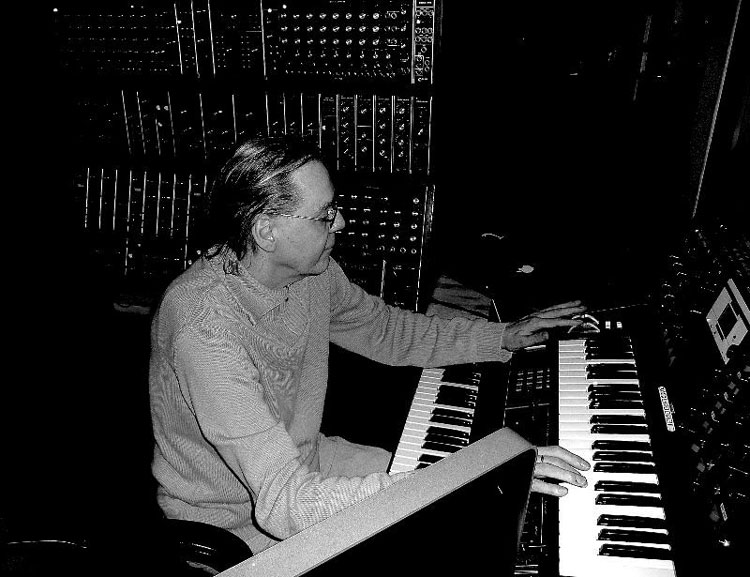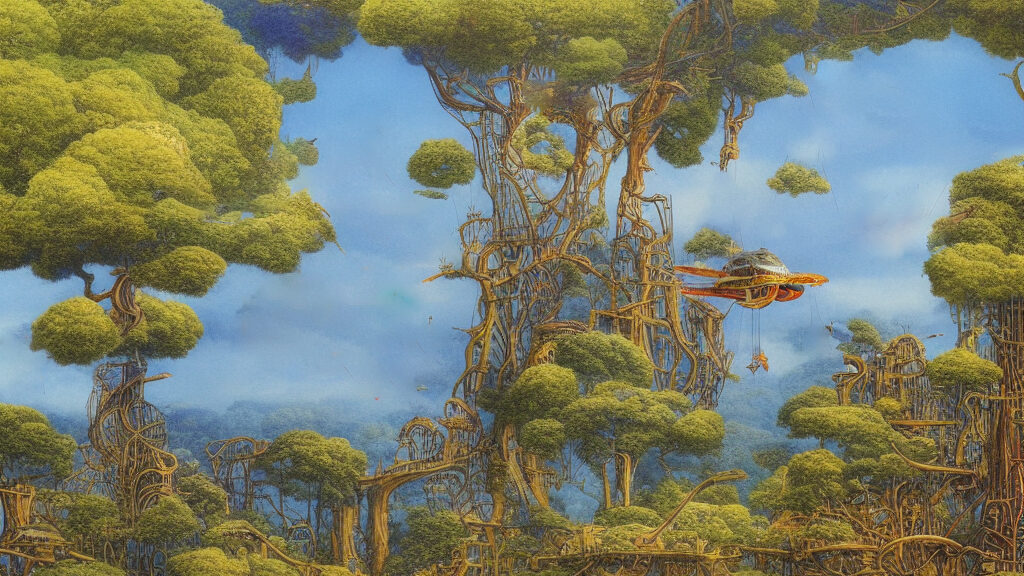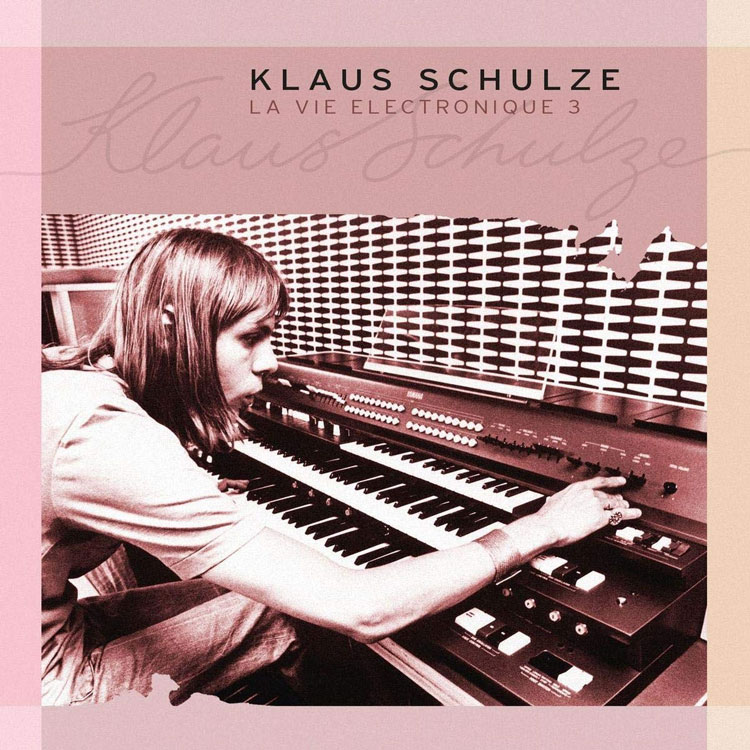Highly influential German synthesist and composer Klaus Schulze died on April 26, 2022. Schulze was one of the pioneers of electronic music, including genres such as cosmic music, Berlin School and sequencer based that inspired numerous ambient electronic and techno and trance artists worldwide.
Klaus Schulze was born on August 4, 1947, in Berlin, Germany. Initially, he was drummer for Tangerine Dream, the pioneering electronic music band founded in West Berlin. Schulze joined Tangerine Dream in 1969.
In 1970, Klaus Schulze left Tangerine Dream to form another iconic electronic music band, Ash Ra Tempel together with Manuel Göttsching and Hartmut Enke. In 1971, he left Ash Ra Tempel.
In 1973, Klaus Schulze initiated his solo career with the album “Irrlicht”. This admired classic album was closer to avant-garde classical music than what we currently know as electronic music. In fact, Schulze did not use synthesizers. Instead, he used a modified organ and recorded music performed by the Freie Universität Berlin with a cassette recorder. He used filters to modify the orchestra’s music practically beyond recognition
“Cyborg” came out in 1973. This time, Schulze ventured into what became known as cosmic music. On “Cyborg” he used orchestral tapes, as he had previously done on “Irrlicht”. In addition to the organ, he had a synthesizer and a Revox machine.
In 1974, Klaus Schulze unveiled “Blackdance”. This was his first album released in England on Caroline, a label owned by Virgin Records. Schulze played organ and synthesizers although for “Voices of Syn” (the longest piece on “Blackdance”), he used the vocals of opera singer Ernst Walter Siemon. He also added 12-string guitar along with congas and tabla.
Also in 1974, Schulze released “Timewind”, yet another electronic music classic. The music evolved slowly and was described as an electronic version of an Indian raga. The intent of “Timewind” was to conjure up a timeless state in the listener.
With “Picture Music”, launched in 1975, Schulze added rhythms to his transfixing electronic music foundation. This was Schulze’s first album made exclusively with synths. He used the EMS VCS 3.
In 1976, Schulze released the cult album “Moondawn”. This time, Schulze used a Moog synthesizer and was joined by Harald Grosskopf on drums.
The year 1977 was a busy time in terms of album releases, including the soundtrack album “Body Love”; “Mirage” and “Body Love 2”. “Mirage” is one Schulze’s classics, revered by fans.
Schulze’s tenth album, “X” came out in 1978. At the time, Schulze’s inspiration included Wagner and Science Fiction writer Frank Herbert, specially his “Dune” saga.
In 1979, Schulze released “Dune”. This is another essential Schulze album. Guests include Arthur Brown on vocals and Wolfgang Tiepold on cello (used as a drone).
“Live”, released in 1980, was Schulze’s twelfth solo album. It is one of his quietest live recordings.
Also launched in 1980, “Dig It” was Schulze’s first album using a computer. Thus, it was his first “digital” album. Schulze loved the result. He played and mixed everything except the drums. He recruited Fred Severloh to play live drums.
In the 1980’s, Schulze started to produce electronic music side projects under the artistic name Richard Wahnfried. The first one was the album “Tonwelle” (1981). Guests included Manuel Göttsching (Ash Ra Tempel) and drummer Michael Shrieve (Santana).
Klaus Schulze released “Trancefer” in 1981. This superb electronic album features percussionist Mike Shrieve and cellist Wolfgang Tiepold.
“Audentity” came out in 1983. This well received soundtrack album included Rainer Bloss on keyboards; Wolfgang Tiepold on cello; and Michael Shrieve on drums.
“Dziekuje Poland” (1983) had a special significance. At the time, Poland was still behind the iron curtain. However, Schulze easily got permission to perform there because he played instrumental music.
In 1984, Schulze released the soundtrack album “Angst” and Richard Wahnfried’s “Megatone”. Schulze composed the “Angst” music after reading the script. The movie Angst was shot after Schulze had completed the score. Meanwhile, “Megatone”, described as an epic cosmic trip, featured Michael Garvens, Axel-Glenn Müller, Ulli Schober, Michael Shrieve and Harald Katzsch.
“Inter*Face” was released in 1985. Schulze had lost interest in the problems caused by analogue sound at the time. He fully embraced digital sounds, and although he used drums, they were processed to sound digital. Schulze said: “In contrast to many people who found the digital sound cold, I found it more interesting than the rumbling analogue sound just because of its clear transparency. You can use both sounds together wonderfully.”
“Dreams” (1986) featured guest musicians from Berlin. That same year, Richard Wahnfried’s “Miditation” came out.
Next came “En=Trance” (1988) and “Miditerranean Pads” (1990). “Miditerranean Pads” is one of the most percussive albums made by Klaus Schulze. He used a wide range of samples of drums from West Africa, Japan and other parts of the globe.
The album “Le Moulin De Daudet” (1992) was a commission for Egyptian film director Samy Pavel.
Klaus Schulze’s Wahnfried released the electronic trance album “Trancelation” in 1994 as a reaction to the trance wave that became popular during the decade.
Klaus Schulze, along with Krafwerk, were regarded as the Fathers of Trance and Techno. Sections of former Schulze discs were being played in dance clubs and discos, and techno producers used Klaus’ music for their own musical projects. Trendy groups such as The Irresistible Force, Future Sound of London or The Orb asked for their use of Klaus Schulze samples. However, music piracy was widespread, and some other artists used Klaus Schulze’s music without permission.
With 1995’s “In Blue” Schulze returned to his familiar cosmic music style. It included a guest appearance by his longtime collaborator Manuel Goettsching.
“Trancelation” and “Trance Appeal” (1996) were two more electronic trance music albums under the Wahnfried name.
“Drums’N’Balls” (1997) featured numerous vocals samples.
On “En=Trance” (1988) Schulze continued his purely electronic music explorations.
In 2000, Schulze released a 10CD wooden boxed set titled “Contemporary Works”. Although the boxed is out of print, many of the discs were later reissued as individual albums, including Ballett 1, 2, 3 & 4, which were made to honor Schulze’s mother who had been a ballet dancer and died in 1998.
In 2001, Schulze released “Live @ Klangart” recorded at the KlangArt festival. Schulze invited his longtime collaborator, cellist Wolfgang Tiepold. After the concert ended, the audience would not leave, but they sat quietly. Schulze stepped back on stage and played an encore for the patient concertgoers.
In 2002, Schulze released another boxed set titled “Contemporary Works II”. This time it was 5 CDs. As with his previous boxed set, the content was reissued later on as individual CDs, including “Another Green Mile” and “Androgyn”
Next came “Moonlake” (2005) and “Continuum” (2007).
Klaus Schulze initiated a series of collaborations with the vastly talented Australian artist Lisa Gerard. The recordings included Farscape (2008), Rheingold (2008), Come Quietly (2009), Dziękuję Bardzo (2009) and Big in Europe (2013).
In 2009, Schulze launched a series titled “La Vie Electronique” (2009-2015) that included 16 volumes.
“Big in Japan: Live in Tokyo 2010” was released in 2010.
Next came “Shadowlands” (2013) and the live album Stars Are Burning (2014)
The double CD “Eternal – The 70th Birthday Edition” (2017) celebrated Schulze’s 70th birthday. CD 1 contained a previously unreleased album with tracks recorded around 2006 and 2007 while CD 2 included rare tracks.

Afterwards, Schulze released “Silhouettes” (2018) and “Next of Kin” (2019)
In 2022, right before his passing Schulze announced the release of a new album titled “Deus Arrakis”.
Klaus Schulze died on April 26, 2022.
German electronic music artists Bernhard Wöstheinrich and Stephen Parsick, representing a younger generation of musicians inspired by the Berlin School, said: “We had just finished all preparations for the release of ULTIMA RATIO, when we received the news of the sudden death of Klaus Schulze. Full of sadness we would like to dedicate to him the piece “Mundane” as a farewell greeting from us to his new cosmic address.”
German record label, SPV, released this statement from SPV managing director Frank Uhle on the death of Klaus Schulze: “We were shocked and saddened to hear the news of Klaus Schulze’s sudden death. We lose and will miss a good personal friend – one of the most influential and important composers of electronic music – a man of conviction and an exceptional artist. Our thoughts in this hour are with his wife, sons and family. His always cheerful nature, his innovative spirit and his impressive body of work remain indelibly rooted in our memories.”
Many of Klaus Schulze’s albums were reissued and remastered, featuring bonus tracks and additional liner notes.

